



Check out the latest hotels deals in India with up to 70% off with Agoda India



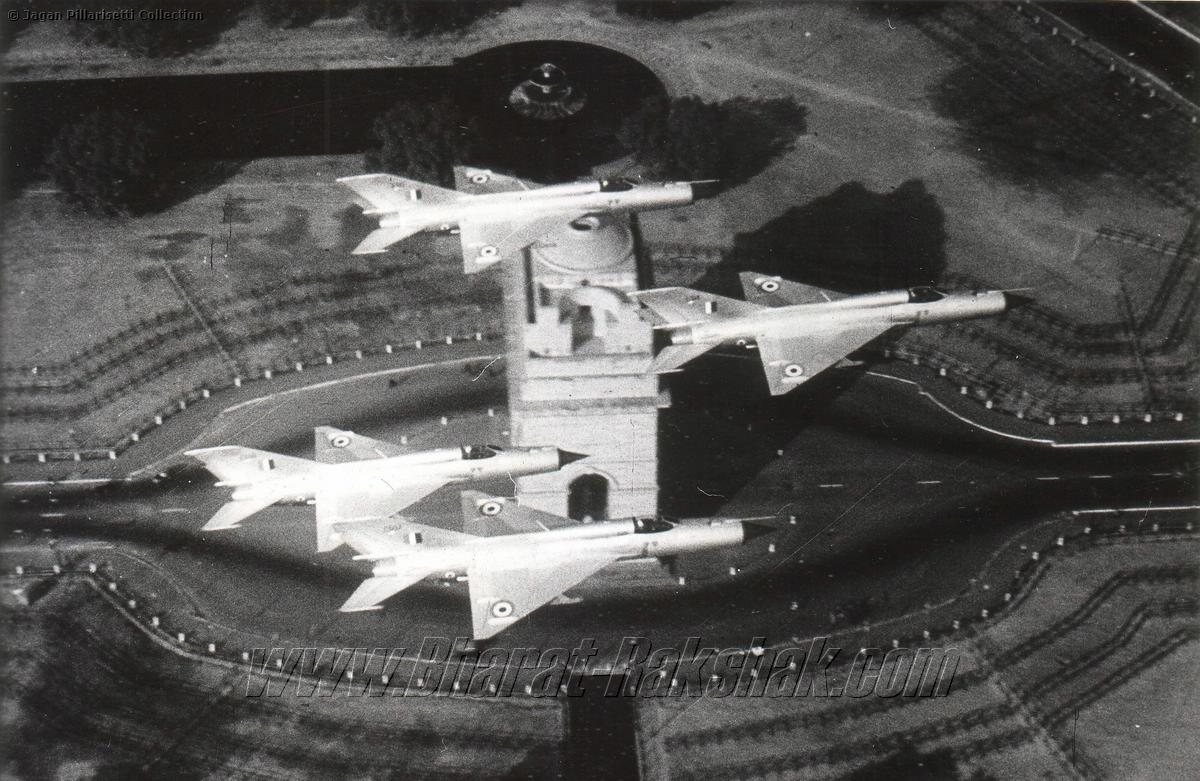
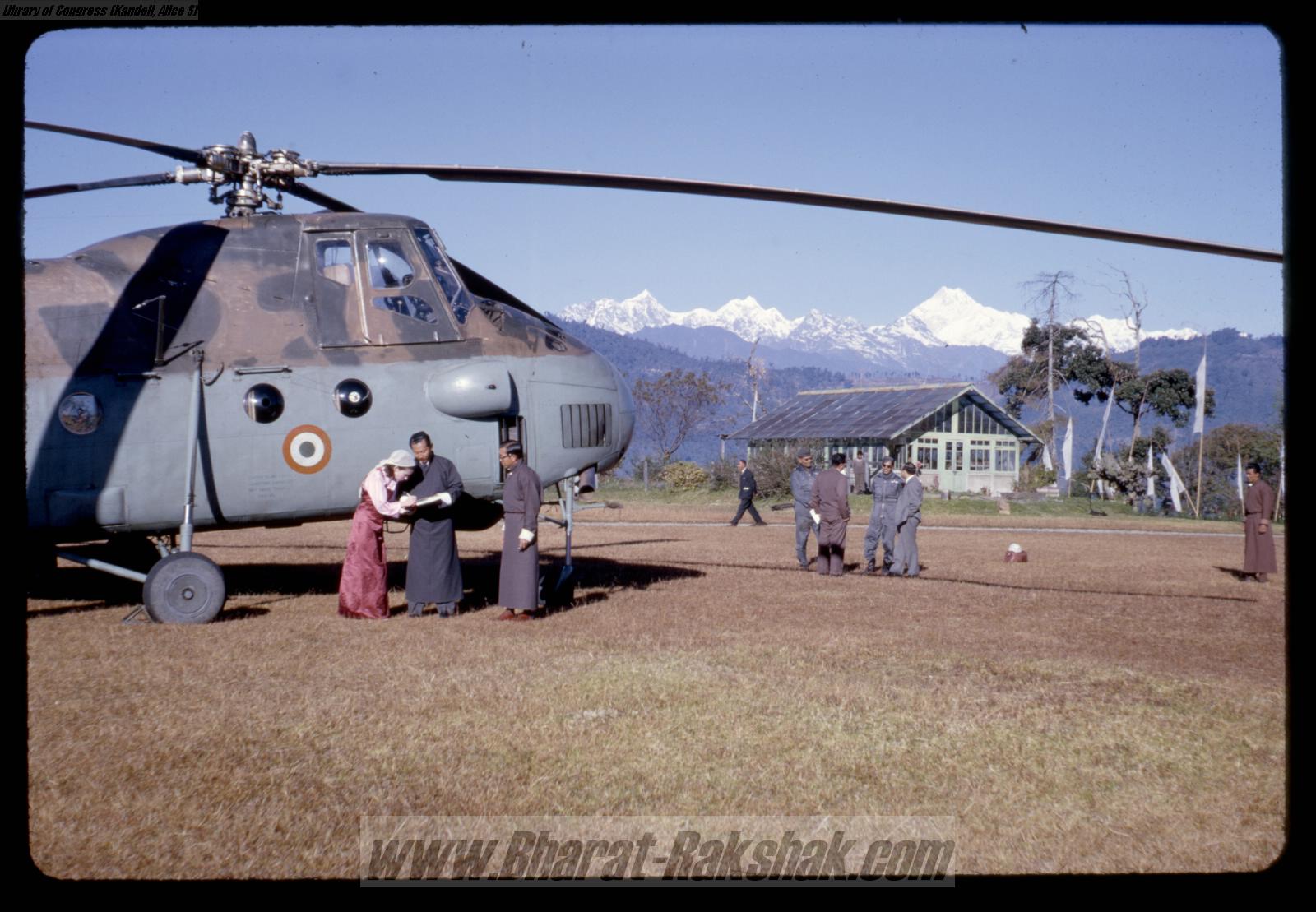
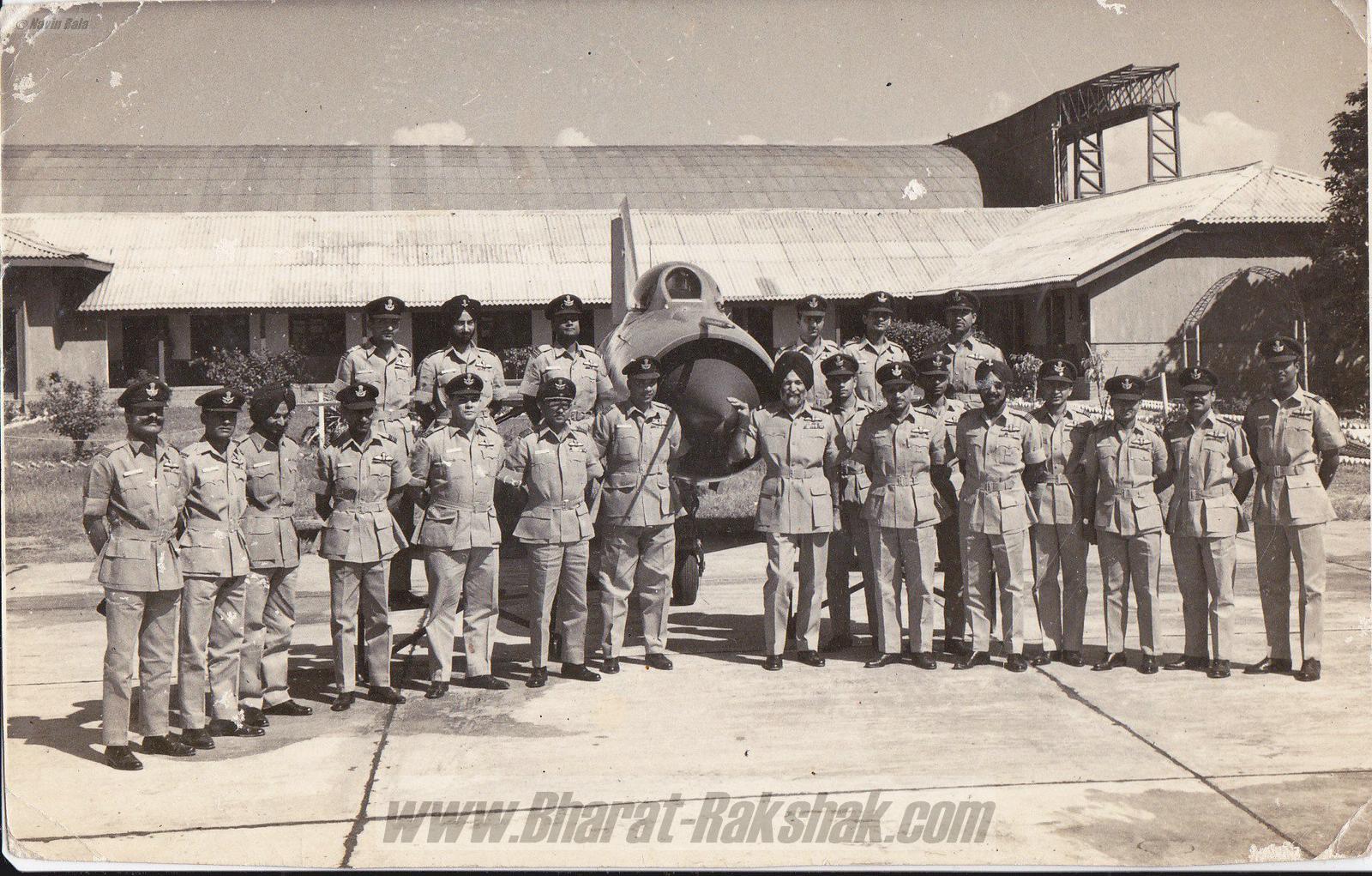
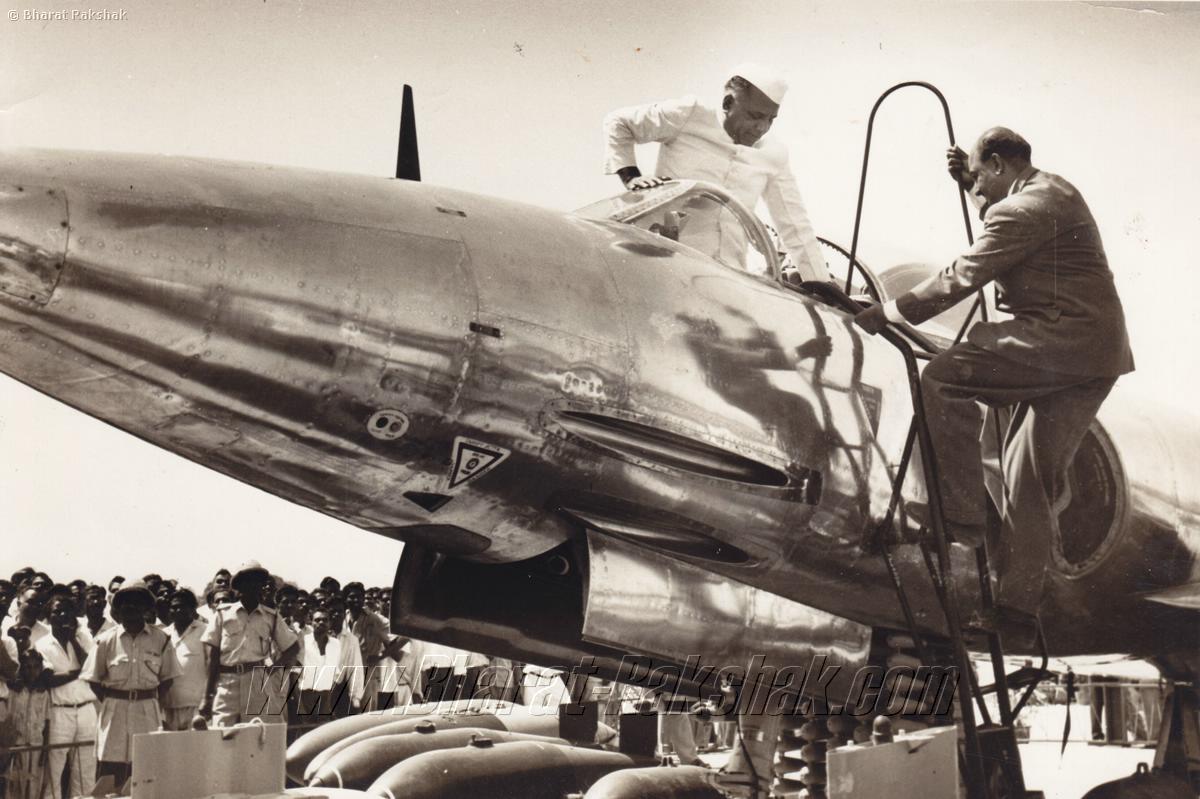










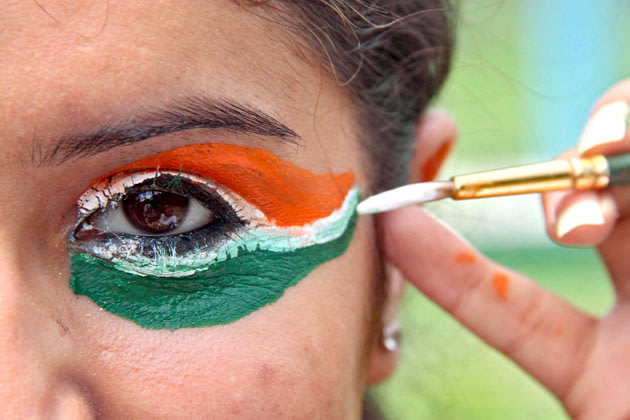






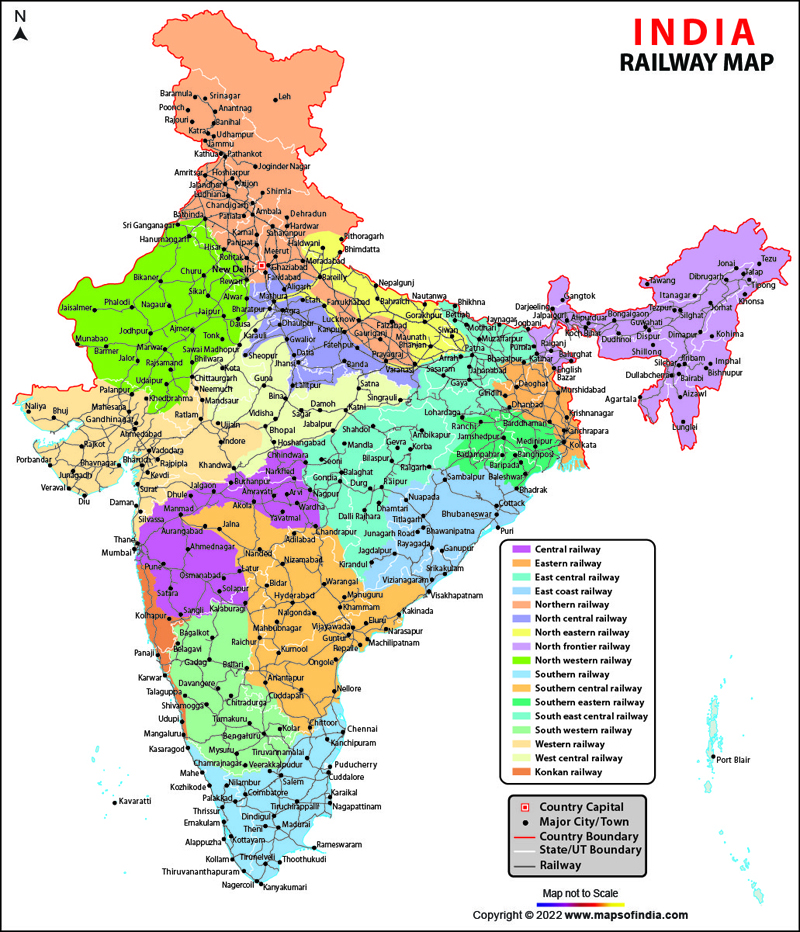
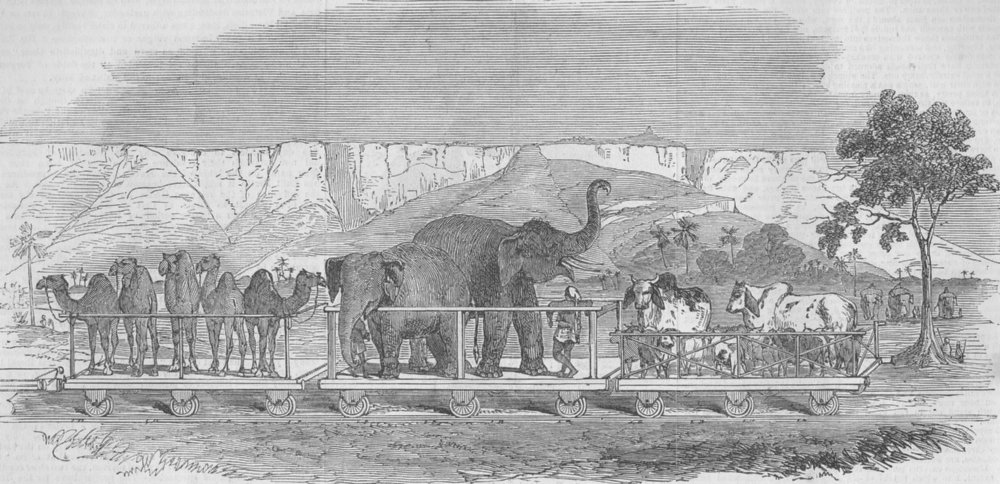
"Railway from Calcutta to Delhi--baggage train passing the fortress of Rhotas," from the Illustrated London News, 1851; also *"Railways in India--Embankment for the Calcutta Railway, behind the town of Serampore" (ILN 1853)*
Source: ebay, June 2009
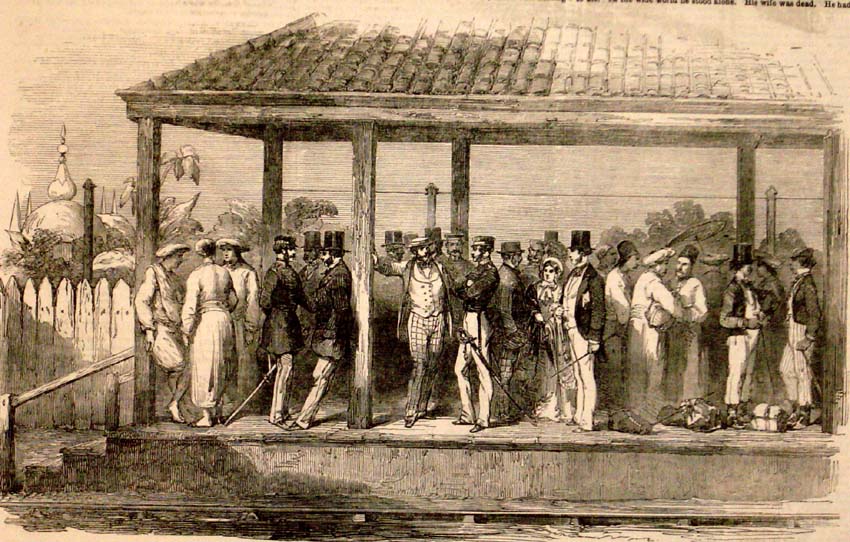
Source: ebay, June 2004
*"Opening of the East Indian Railway--the Burdwan Station," from the Illustrated London News, 1855*
Source: ebay, Nov. 2010
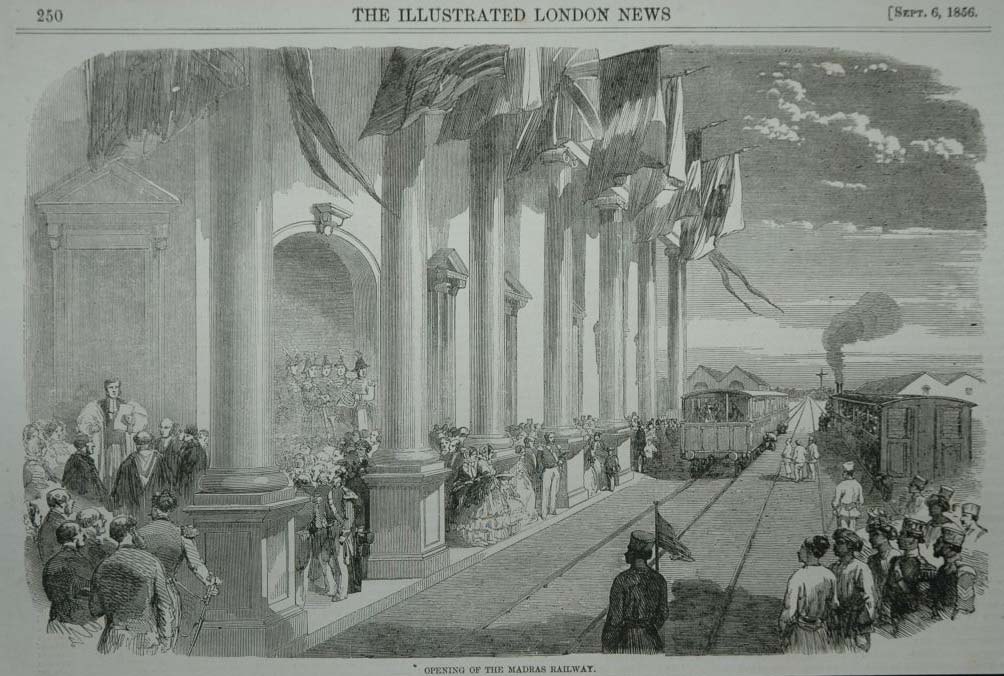
Source: ebay, Dec. 2007

"Santhan Rebellion: Affray between Railway Engineers and Santhals," Illustrated London News, 1856
Source: ebay, July 2009
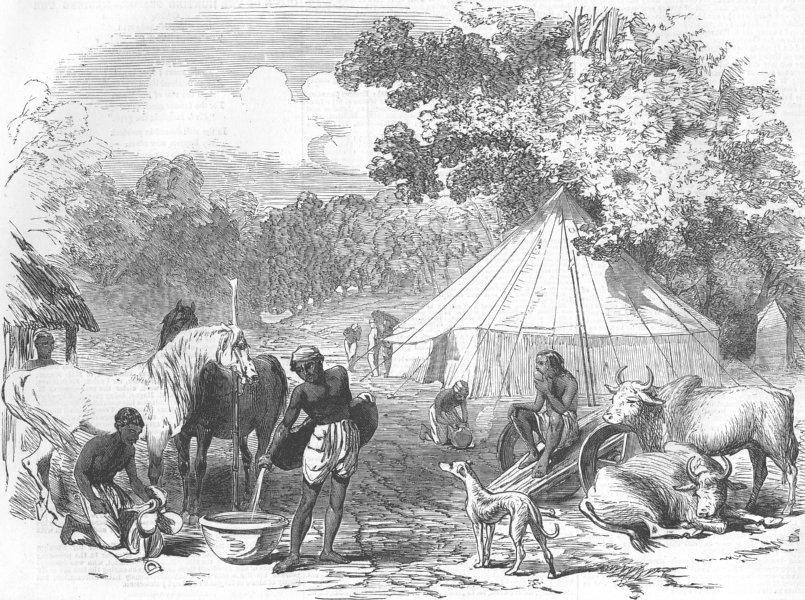
"Engineer's camp, on the East Indian Railway," from the Illustrated London News, 1857
Source: ebay, Sept. 2009
*"East Indian railway water-tank at Barwarie, defended against the mutineers for thirty-two hours," from the Illustrated London News, 1858*
Source: ebay, Aug. 2010
*"Accident on the East Indian railway between Ahmoodpore and Rampore," from the Illustrated London News, 1863*
Source: ebay, Apr. 2010
*"The Bhore Ghaut incline" (a very taxing track engineering feat), from the Illustrated London News, 1867*
Source: ebay, June 2009
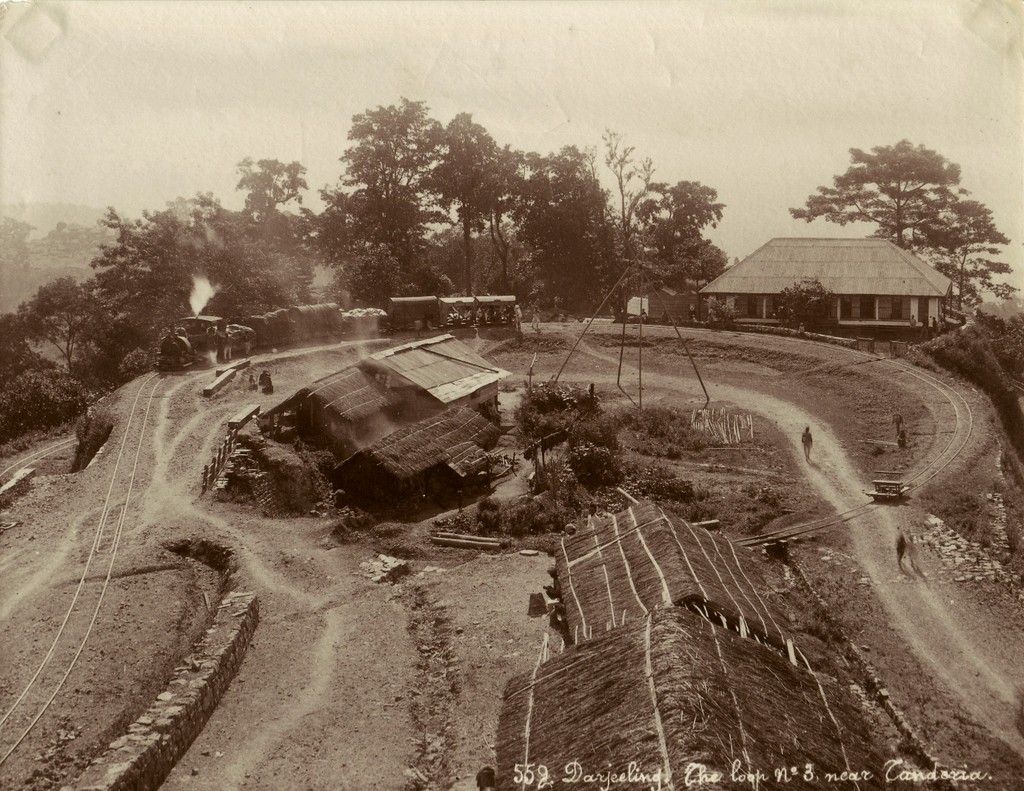
Source: ebay, May 2008
*A mountainous route in Ceylon, photo by Skeen, c.1870*
Source: ebay, June 2012
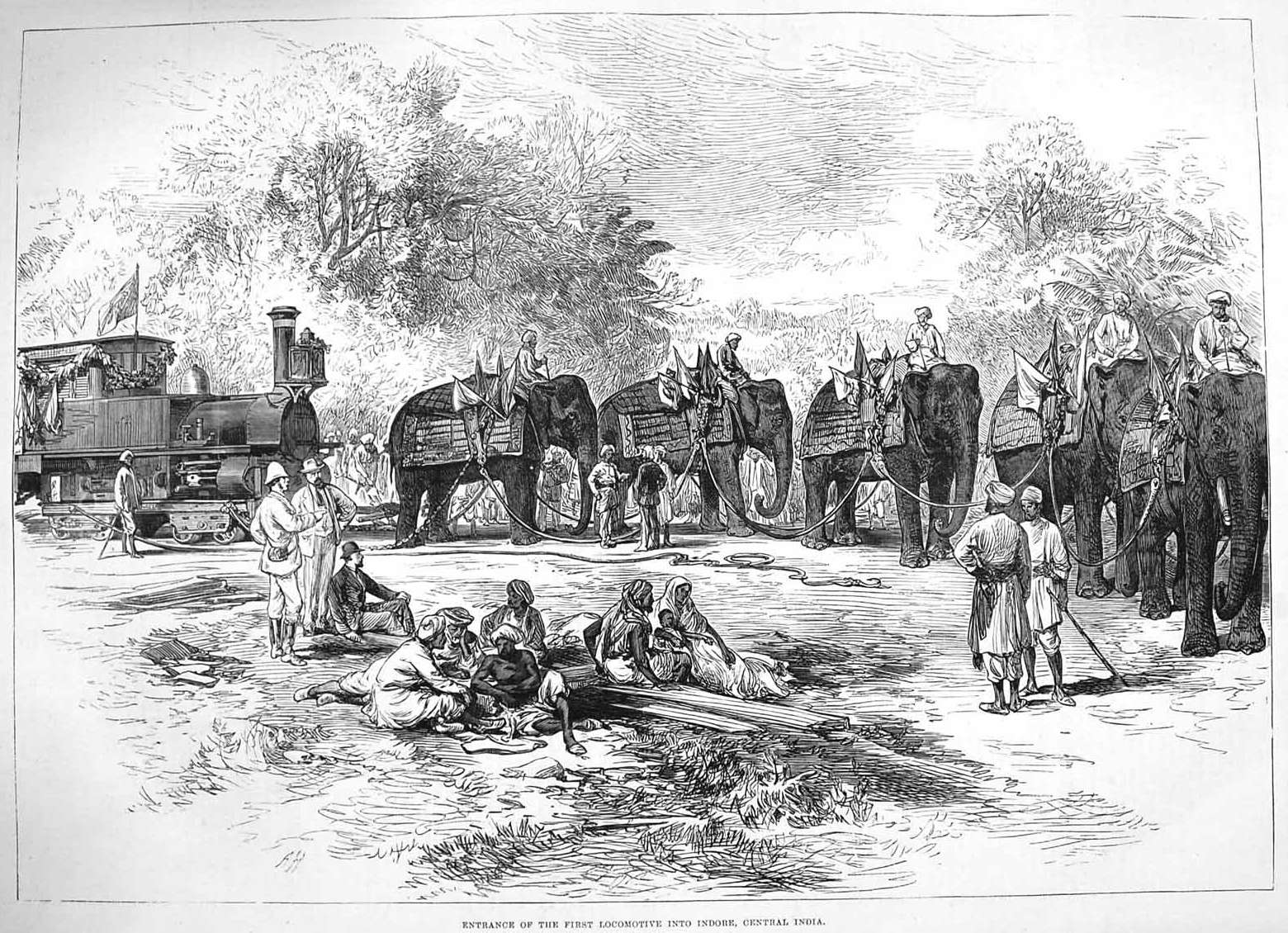
"Entrance of the first locomotive into Indore, Central India," from the Illustrated London News, 1875; also *"Embarkation of artillery in railway trains in India"*
Source: ebay, Nov. 2008

Source: ebay, Apr. 2006
"The ghats, or "steps," by which the range is interrupted at intervals, have naturally acquired exceptional importance, as affording direct communication between the peoples of the coast and the plateau. North-east of Kalyan lies the Thal, or Kasara ghat, traversed by the main highway and by the railway from Bombay to Calcutta, which, by a gradient of 26 millimetres in the yard, attains an elevation of 1,900 feet. The Bhor ghat, formerly known as the "Key of the Dekkan," is even lower, being only 1,800 feet high; but it is crossed at a much steeper incline by the Bombay-Madras railway, which, before the opening, of the lines over the Alps, Rocky Mountains, and Andes, was regarded as one of the greatest triumphs of modern engineering skill. All the other ghats south of this pass have hitherto been utilised only by tracks and carriage-roads, but they are so numerous that every town and village on the coastlands enjoys direct access to the plateau. Most of them are jealously guarded by garhs, or forts, whose frowning ramparts crown every rocky prominence. Some of these strongholds are perched on the edge of precipices accessible only by steps hewn in the live rock, or by hidden galleries."
*"Magellan Gallery, Ceylon Railway, India," from the Illustrated London News, 1876*
Source: ebay, Mar. 2010
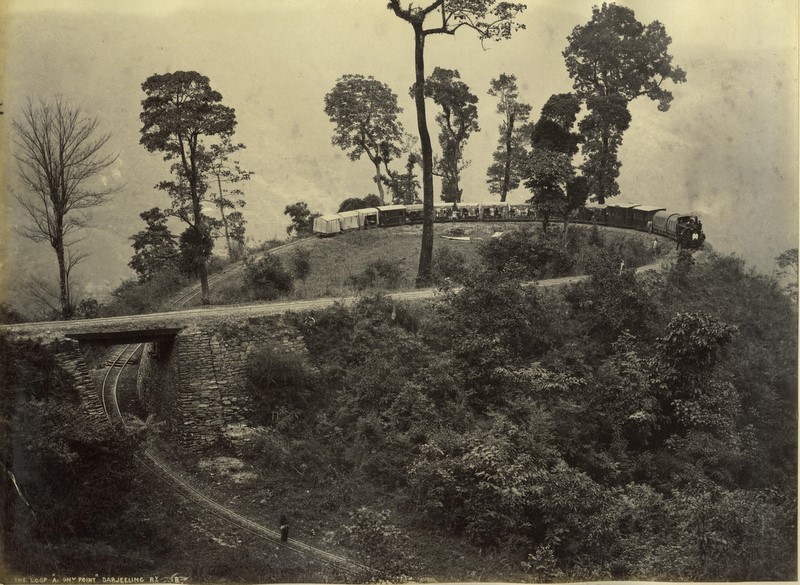
Source: ebay, Mar. 2008
*"An unexpected danger -- an English engineer's predicament in India," from The Graphic, 1890*
Source: ebay, Dec. 2008
*"An awkward visitor at an up-country railway station in India," from The Graphic, 1892*
Source: ebay, Nov. 2008
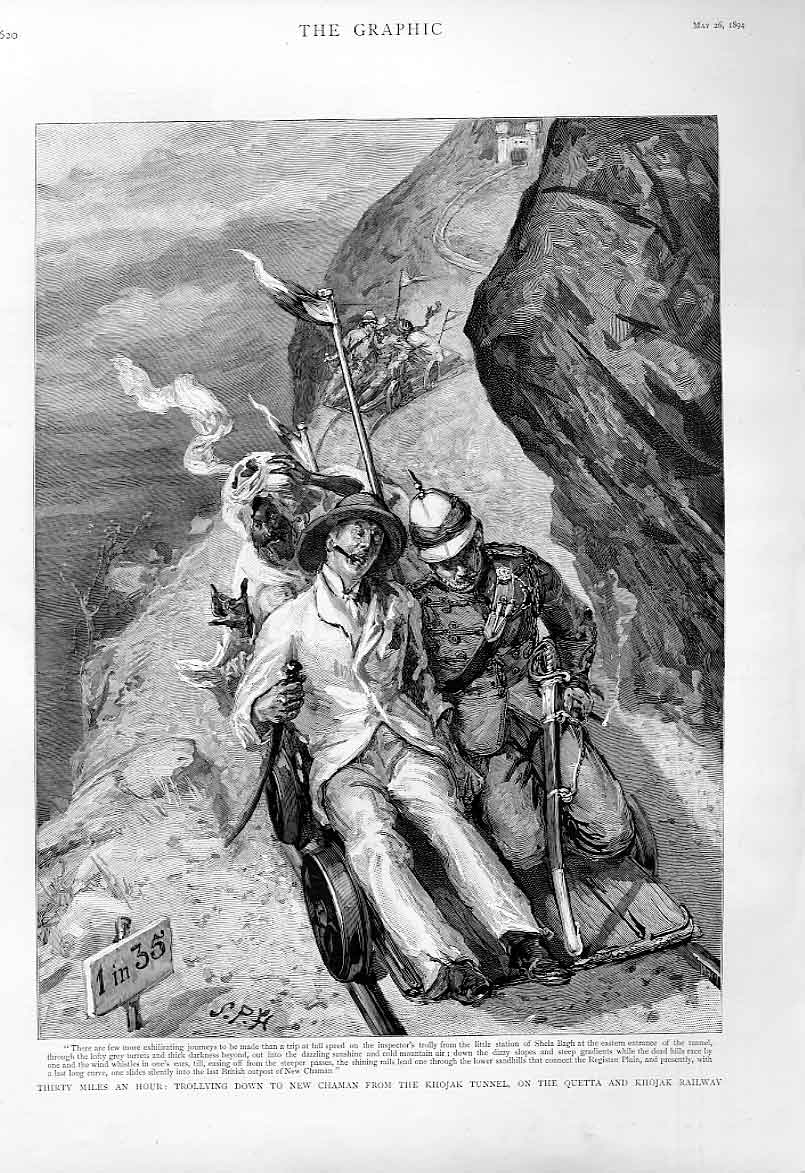
Source: ebay, Mar. 2006
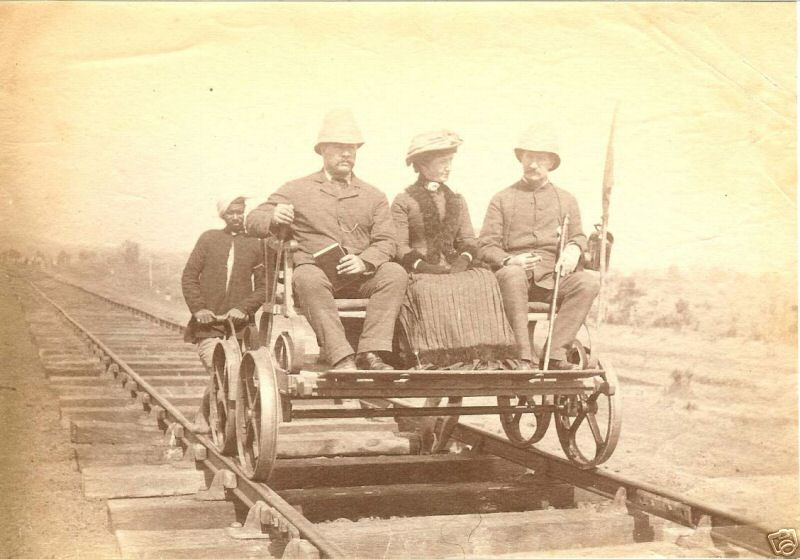
Source: ebay, Feb. 2008
*Fast food at the window of your train compartment; a visitor's photo, 1902*
Source: ebay, Feb. 2010
*"Railway Cafeteria, near Agra," a professional photo, 1925*
Source: ebay, Dec. 2009
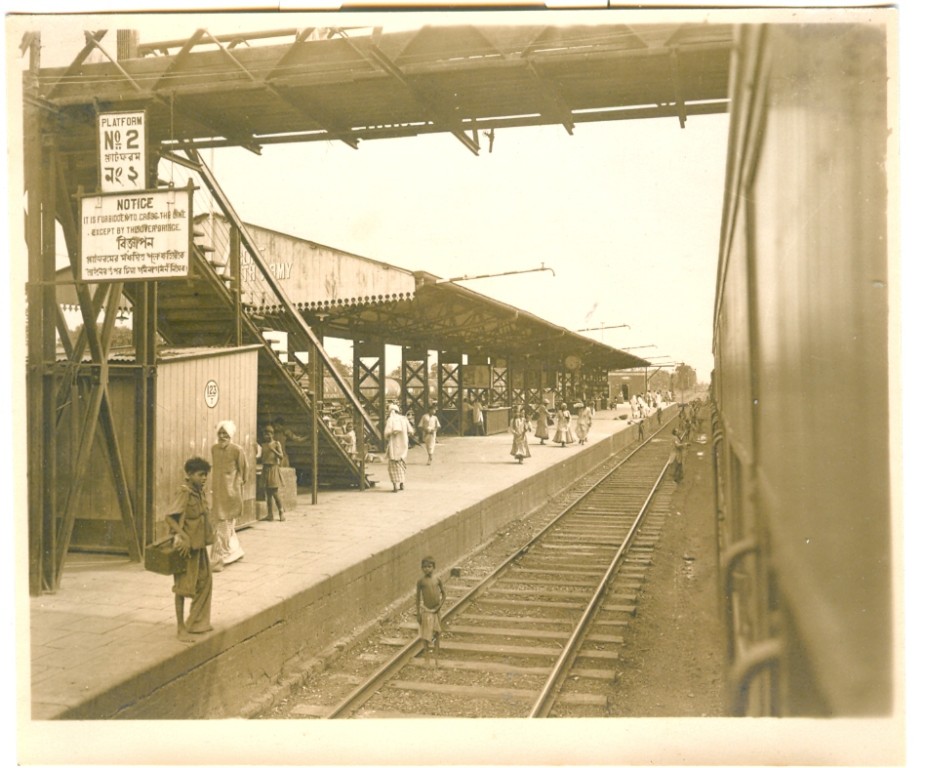
A railway station, Calcutta, 1940's; photo by an American military photographer; *another view*
Source: ebay, May 2009
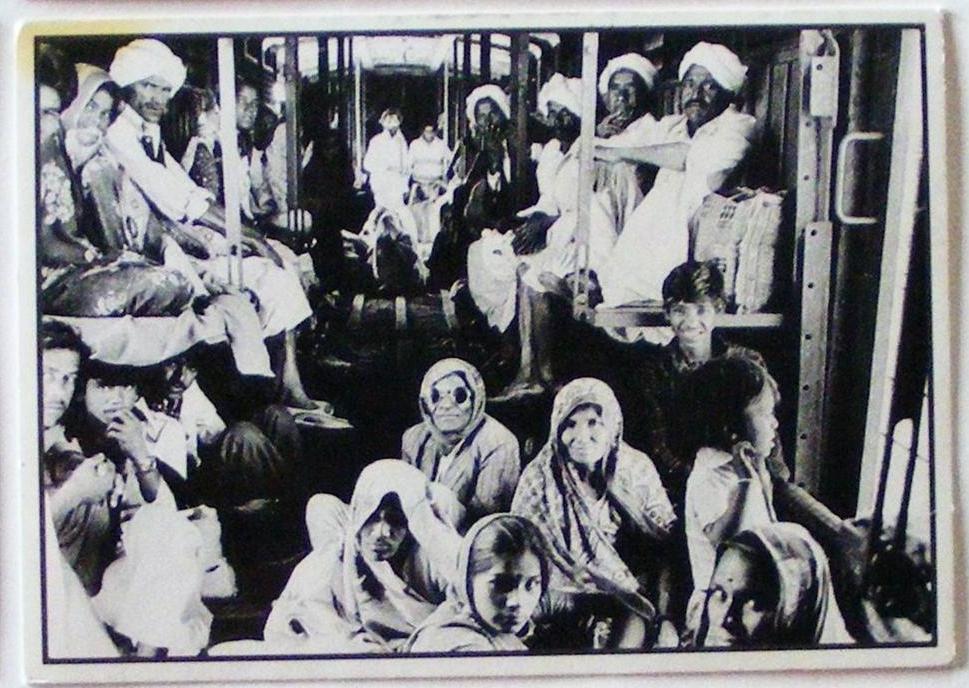
"Train to Girnar, Gujarat," a postcard by Ketaki Sheth, c.1990's
Source: ebay, Apr. 2009
Source: ebay, Apr. 2009
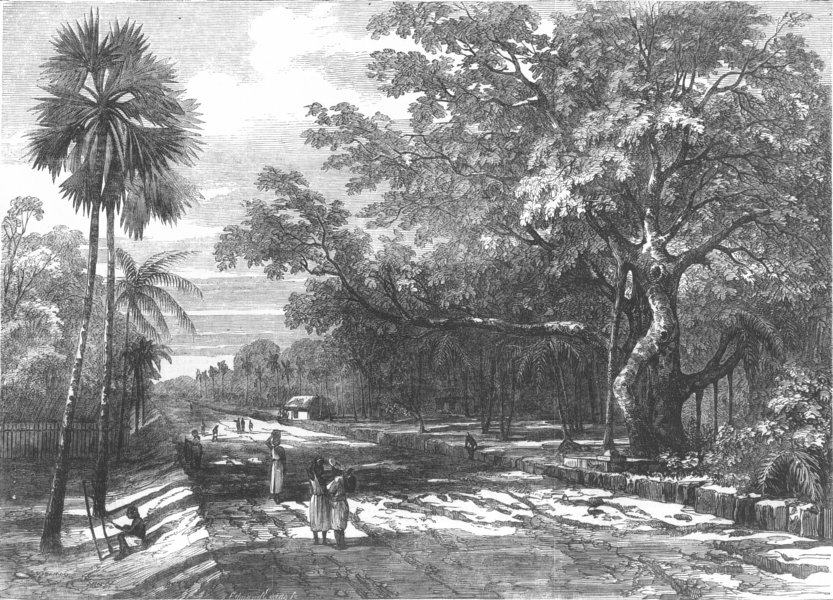
Kingfisher Airlines re-aligns international operations and fleet to contain losses
The financial woes at Kingfisher Airlines continue. Despite carrying the maximum number of domestic passengers, over dues are piling up. In some cases cheques issued by the airline are bouncing, salary and other cost cutting measures are making employees like pilots leave the airline to join competitors.
This photo from Digital Airliners on Flickr encapsulates the three stages of Kingfisher's crumbling international dreams and the sorry end of it's much awaited Airbus A340-500s meant for ultra long haul non-stop Bangalore to San Francisco operations.

At Toulouse we can see one of the three A340-500s sold to Arik Air in the Arik livery. Next to it is a "white tail", industry jargon for a plane abandoned by its buying airline, and next to it is one still painted in Kingfisher Airlines livery.
As oil prices sky-rocketed in 2008 Indian aviation collapsed. Kingfisher did not take delivery of it's ordered five A340-500s. Three were sold to Arik Air of Nigeria and two languished at Toulouse eventually becoming "white tails". Even narrow body A321s ordered by Kingfisher were diverted to other airlines like Turkish THY.
In times of high demand and long delivery lead times the ordering airline demands, and does receive a premium when diverting its aircraft deliveries to another buyer, but in these times of distress I am sure Kingfisher has made no money, and most likely lost money.
The Mint newspaper is reporting that Kingfisher Airlines has finally managed to sell off the remaining two Airbus A340-500s that were never taken from Airbus.
It is already in advanced talks with Arik Air to wet lease (aircraft and crew) these two A330s from the third quarter of 2009. At the same time it has initiated talks with Jet Airways for code sharing of flights.
Kingfisher has also launched international services between Kolkata and Dhaka using an ATR72-212A (ATR72-500) turbo-prop aircraft via it's low cost Kingfisher Red service.
Kingfisher has commenced services on the Bangalore Colombo and Chennai Colombo routes using it's narrow body A320 fleet, and the Colombo Bangalore service connects well to it's Bangalore London service. Sources indicate Kingfisher carried about 2,766 passengers between Colombo and London via Bangalore in the last four months or about 22 passenger per day. In the same period Kingfisher has carried about 6,200 origin and destination passengers between Bangalore and London. An average of only 50 passengers per flight is too low to justify an A330 operation.
As demonstrated by the Colombo experience, Kingfisher desperately needs to build connecting traffic by commencing operations between Bangalore and Bangkok and other ASEAN destinations like Kuala Lumpur, Singapore and Jakarta to feed it's London service and it needs to build connections beyond Heathrow to North America to create a greater pull at the same time.
However, repeated deferrals of announced international operations like Hong Kong and Singapore, Bangkok, and Dubai has left industry watchers including myself so sceptical that we do not even report the announced launch of a new route by Kingfisher till the aircraft actually flies.
Most analysts agree that the on-going financial woes are largely responsible for these repeated deferrals but the airline needs to get a move on. Either expand international services or withdraw completely.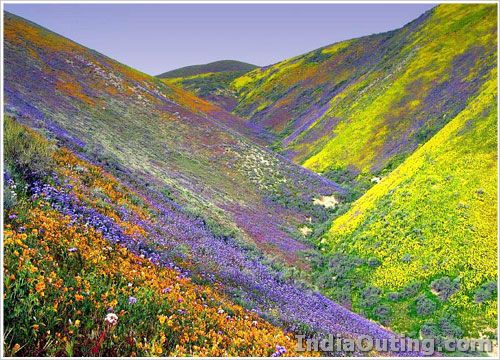 High in the Himalayan ranges of Garhwal hills of Uttaranchal lies an enchanted Valley.” About 600 kilometers from Delhi, in the Chamoli district of Uttaranchal can be found The Valley of Flowers, a breathtaking array of over 500 different species of wild flowers spread over an area of 87.5 km². It is situated a height of 11,000 feet to 14,000 feet above the sea level in the Western Himalayas.
High in the Himalayan ranges of Garhwal hills of Uttaranchal lies an enchanted Valley.” About 600 kilometers from Delhi, in the Chamoli district of Uttaranchal can be found The Valley of Flowers, a breathtaking array of over 500 different species of wild flowers spread over an area of 87.5 km². It is situated a height of 11,000 feet to 14,000 feet above the sea level in the Western Himalayas.
This mysterious valley was hidden from the outside world, with only locals frequenting the place. Initially, it was avoided by the shepherds who believed this magical valley to be the celestial playground of the Gods, nymphs and fairies.

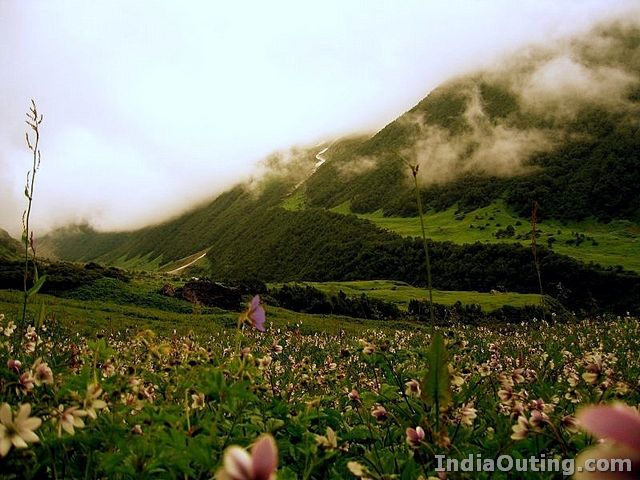

The Valley was discovered by Frank Smith, a mountaineer, botanist and an explorer who came across it quite accidentally in 1931. He was so captivated by its outstanding beauty, which was in its full bloom at the time that he wrote a book about it called “Valley of Flowers”. Thus, the Valley remained a secret no more much to the delight of nature enthusiasts all over the world.
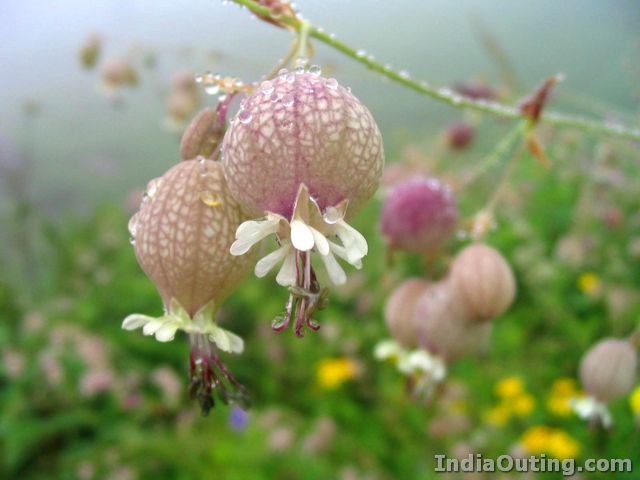
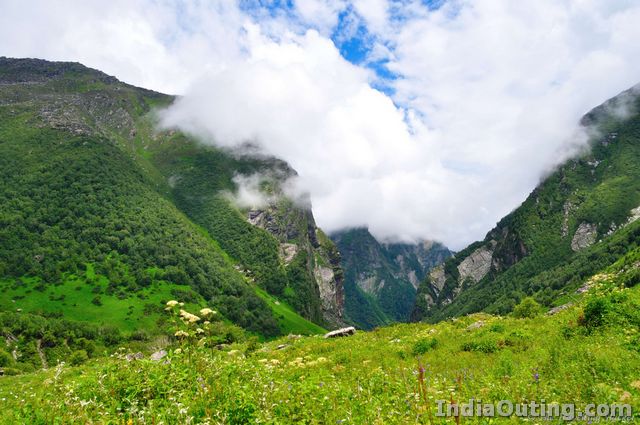
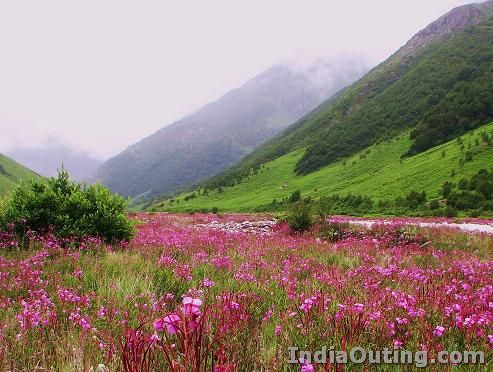
The Valley itself is flanked on either side by imposing peaks, capped with snow. It is divided into two sections due to the Pushpawati River which cuts through the valley. The major portion of this valley is on its right bank and is every trekker’s dream come true. The entire trek from Govindghat to the valley via Ghangharia is a feast to the eyes. The Valley of flowers changes color almost every day, as it blooms with hundreds of new different flowers along with the changing shades of the old flowers as time passes by. It has been acknowledged by botanists, mountaineers and nature lovers as one of the most picturesque high altitude valleys in the world.
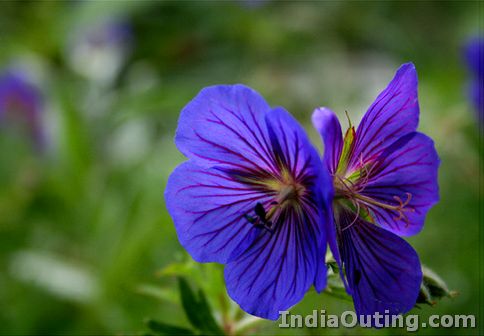
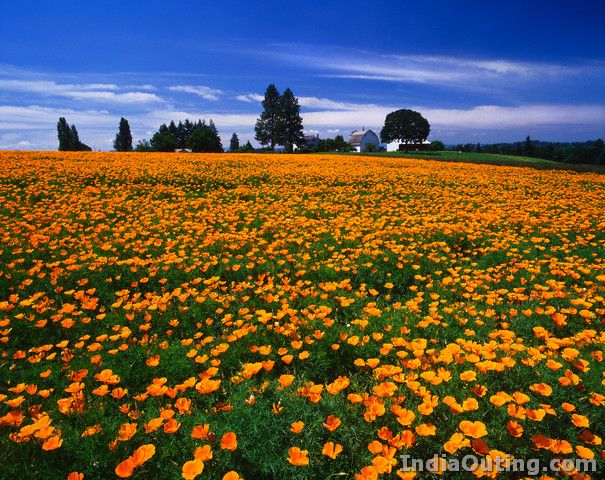
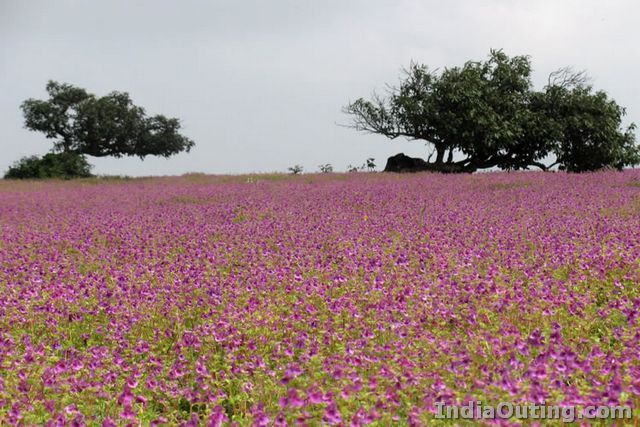
It was only in 1982 that an area of 8,950 hectares of the valley was declared a National Park. In July 2005, it was declared a World Heritage Site by UNESCO. This is mainly due to the fact that the valley contains so much rich diversified fauna within its area especially as it is a meeting point of Zanskar, Himalayan ranges and Eastern and Western Himalayas. The importance of this beautiful valley is furthered as many endangered flower species and medicinal plants can be found here.
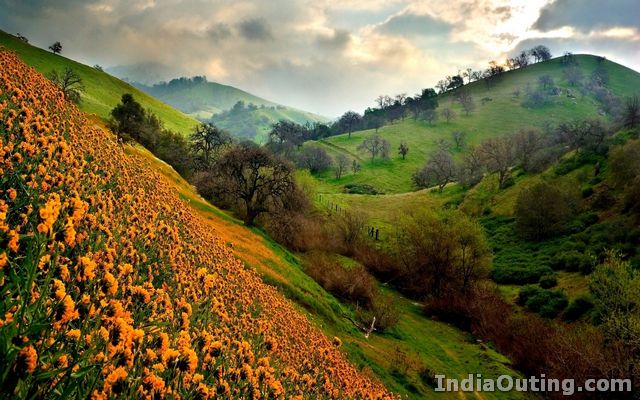
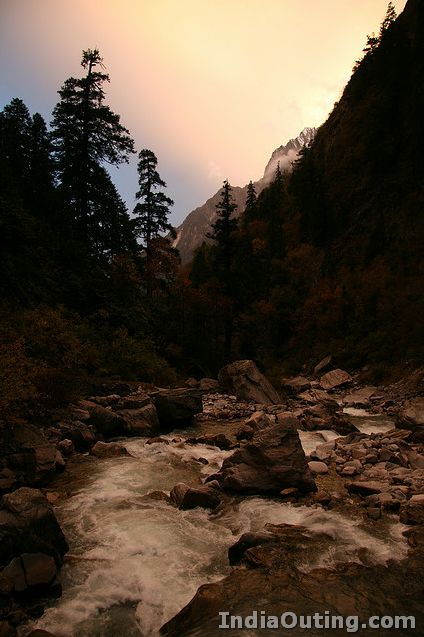
From November to May, the valley is covered in a bed of snow but the flora here is well adapted to the harsh climatic conditions. The best time to visit the Valley of Flowers is in the months of July and August after the snow has melted. The flowers are in full bloom during this time, giving you ample opportunity to enjoy the never ending charm of this place.
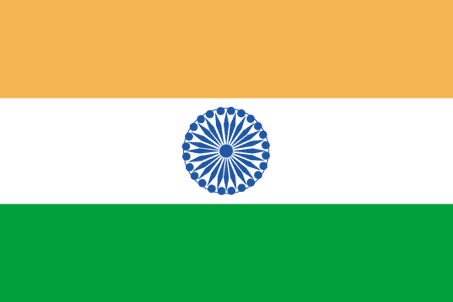





This photo from Digital Airliners on Flickr encapsulates the three stages of Kingfisher's crumbling international dreams and the sorry end of it's much awaited Airbus A340-500s meant for ultra long haul non-stop Bangalore to San Francisco operations.

At Toulouse we can see one of the three A340-500s sold to Arik Air in the Arik livery. Next to it is a "white tail", industry jargon for a plane abandoned by its buying airline, and next to it is one still painted in Kingfisher Airlines livery.
As oil prices sky-rocketed in 2008 Indian aviation collapsed. Kingfisher did not take delivery of it's ordered five A340-500s. Three were sold to Arik Air of Nigeria and two languished at Toulouse eventually becoming "white tails". Even narrow body A321s ordered by Kingfisher were diverted to other airlines like Turkish THY.
In times of high demand and long delivery lead times the ordering airline demands, and does receive a premium when diverting its aircraft deliveries to another buyer, but in these times of distress I am sure Kingfisher has made no money, and most likely lost money.
The Mint newspaper is reporting that Kingfisher Airlines has finally managed to sell off the remaining two Airbus A340-500s that were never taken from Airbus.
Aircraft maker Airbus SAS has sold two A340 passenger planes meant for delivery to Kingfisher Airlines Ltd to government buyers in West Asia, an executive at the European plane manufacturer said.Kingfisher has taken delivery of five Airbus A330-200s. VT-VJK, VT-VJL, VT-VJN, VT-VJO, VT-VJP, three of which it is using on its services to London Heathrow from Bangalore and Mumbai. With improvement in their slot timings at Heathrow, Kingfisher will need only two and can keep one as a standby.
It is already in advanced talks with Arik Air to wet lease (aircraft and crew) these two A330s from the third quarter of 2009. At the same time it has initiated talks with Jet Airways for code sharing of flights.
Kingfisher has also launched international services between Kolkata and Dhaka using an ATR72-212A (ATR72-500) turbo-prop aircraft via it's low cost Kingfisher Red service.
Kingfisher has commenced services on the Bangalore Colombo and Chennai Colombo routes using it's narrow body A320 fleet, and the Colombo Bangalore service connects well to it's Bangalore London service. Sources indicate Kingfisher carried about 2,766 passengers between Colombo and London via Bangalore in the last four months or about 22 passenger per day. In the same period Kingfisher has carried about 6,200 origin and destination passengers between Bangalore and London. An average of only 50 passengers per flight is too low to justify an A330 operation.
As demonstrated by the Colombo experience, Kingfisher desperately needs to build connecting traffic by commencing operations between Bangalore and Bangkok and other ASEAN destinations like Kuala Lumpur, Singapore and Jakarta to feed it's London service and it needs to build connections beyond Heathrow to North America to create a greater pull at the same time.
However, repeated deferrals of announced international operations like Hong Kong and Singapore, Bangkok, and Dubai has left industry watchers including myself so sceptical that we do not even report the announced launch of a new route by Kingfisher till the aircraft actually flies.
Most analysts agree that the on-going financial woes are largely responsible for these repeated deferrals but the airline needs to get a move on. Either expand international services or withdraw completely.
 High in the Himalayan ranges of Garhwal hills of Uttaranchal lies an enchanted Valley.” About 600 kilometers from Delhi, in the Chamoli district of Uttaranchal can be found The Valley of Flowers, a breathtaking array of over 500 different species of wild flowers spread over an area of 87.5 km². It is situated a height of 11,000 feet to 14,000 feet above the sea level in the Western Himalayas.
High in the Himalayan ranges of Garhwal hills of Uttaranchal lies an enchanted Valley.” About 600 kilometers from Delhi, in the Chamoli district of Uttaranchal can be found The Valley of Flowers, a breathtaking array of over 500 different species of wild flowers spread over an area of 87.5 km². It is situated a height of 11,000 feet to 14,000 feet above the sea level in the Western Himalayas.This mysterious valley was hidden from the outside world, with only locals frequenting the place. Initially, it was avoided by the shepherds who believed this magical valley to be the celestial playground of the Gods, nymphs and fairies.



The Valley was discovered by Frank Smith, a mountaineer, botanist and an explorer who came across it quite accidentally in 1931. He was so captivated by its outstanding beauty, which was in its full bloom at the time that he wrote a book about it called “Valley of Flowers”. Thus, the Valley remained a secret no more much to the delight of nature enthusiasts all over the world.



The Valley itself is flanked on either side by imposing peaks, capped with snow. It is divided into two sections due to the Pushpawati River which cuts through the valley. The major portion of this valley is on its right bank and is every trekker’s dream come true. The entire trek from Govindghat to the valley via Ghangharia is a feast to the eyes. The Valley of flowers changes color almost every day, as it blooms with hundreds of new different flowers along with the changing shades of the old flowers as time passes by. It has been acknowledged by botanists, mountaineers and nature lovers as one of the most picturesque high altitude valleys in the world.



It was only in 1982 that an area of 8,950 hectares of the valley was declared a National Park. In July 2005, it was declared a World Heritage Site by UNESCO. This is mainly due to the fact that the valley contains so much rich diversified fauna within its area especially as it is a meeting point of Zanskar, Himalayan ranges and Eastern and Western Himalayas. The importance of this beautiful valley is furthered as many endangered flower species and medicinal plants can be found here.


From November to May, the valley is covered in a bed of snow but the flora here is well adapted to the harsh climatic conditions. The best time to visit the Valley of Flowers is in the months of July and August after the snow has melted. The flowers are in full bloom during this time, giving you ample opportunity to enjoy the never ending charm of this place.




| THE PAINTINGS OF INDIA - ALL ABOUT INDIAN PAINTINGS |
India has been the home of arts and crafts since primitive times and painting is no exception to this fact. Indians knew the art of painting since prehistoric times. Earliest cave paintings depicting various scenes are the ample testimony of this fact. Caves of Bhimbetka and Ajanta are the milestones which Indian Painting's heritage passes through.
CLASSIFICATION OF INDIAN PAINTINGS Indian Paintings can be broadly classified as the murals and miniatures. Murals are huge works executed on the walls of solid structures, as in the Ajanta Caves and the Kailashnath temple. Miniature paintings are executed on a very small scale on perishable material such as paper and cloth. The Palas of Bengal were the pioneers of miniature painting in India. The art of miniature painting reached its glory during the Mughal period. The Ragamala paintings also belong to this school. Here are the categories which will take you through the big world of Indian Paintings covering minute details. Madhubani Paintings There is a village called Madhuban in Mithila region of India where a special kind of painting style evolved, which is nowadays called Madhubani Painting. It is also called Mithila painting . Traditionally these paintings were done on the freshly plastered mud walls of huts but now they are done on paper, canvas and cloths too. These paintings are done by village women folks. These paintings are three-dimensional in view blooming with the colors extracted from the plants grown locally. There are certain symbols that represent the insight of Madhubani Paintings. The symbols like ring of lotus ( kamalban or purain) and bamboo tree were commonly used to adorn the walls. It is interesting fact to note that both the symbols are associated with the fertility and progeny. Warli Folk Paintings This unique kind of painting style was discovered in early seventies of twentieth century.Warli paintings are strikingly different from other forms of Indian Paintings.The theme of these paintings also does not move around mythological stories or any glorification of similar kind. These paintings are made in austere brown background with white as only color. The only exception is red and yellow spots that are auspiciously put to decorate the painting. These paintings are special for many reasons. Most remarkable thing is their intensely social nature.These paintings describe the day today activities of Warlis in light swinging and swirling movements.Scholars trace their origin in Neolithic Age that extends from 3000 B.C. to 2500 B.C. Tanjore Paintings Tamil Nadu is known for its traditional ornate paintings, known as Tanjore paintings. This art originated in the 16th century, under royal patronage. These paintings are created after a meticulous and long drawn process, which involves many stages. Layers of cloth are pasted over wood, to create the base for painting. This is treated with lime paste, to make the surface smooth for painting.The next step involves, drawing outlines of the figures. Later pearls, semi-precious stones, beaten gold leaf and gilt metal are stuck on the image with a mixture of sawdust and glue. Natural Dye Paintings Before the advent of science and the synthesis of chemical colors, Indian artists used materials available in nature, to color their paintings. The natural dye paintings of India used colors derived from roots and leaves, minerals and other materials readily obtainable.Some of these dyes were used by themselves; others required a mordant to help them bind to the fabric. Kalamkari Paintings The literal meaning of kalamkari is a painting done using pen.Kalamkari is an ancient craft which traces its origin 3000 years ago.It's an art of painting as well as printing using vegetable dyes.Kalamkari belongs to India and Iran historically. This art forms has been enriched through generations as the techniques of craftsmanship are given as heritage to the descendents. In India two ancient cities of Andhra Pradesh are almost synonymous with Kalamkari, are Masulipatnam and Srikalahasti.both cities produce their own style of kalamkari paintings. Phad Paintings Rajasthan the land of colors is known for Phad painting, which is done on cloth. This type of painting is mainly found in the Bhilwara district. The main theme of these paintings is the depiction of local deities and their stories, and legends of erstwhile local rulers. Phad is a type of scroll painting. These paintings are created while using bright and subtle colors. Pichwais Paintings Rajasthan is also known for Pichwais, which are paintings made on cloth. Pichwais are more refined and detailed than Phads. They are created and used as backdrops in the Shrinathji temple at Nathdwara and in other Krishna temples Kangra Paintings India's rich painting heritage encapsulates diversified shades in the world of paitings.The Kangra Miniatures of the Pahari School is also an integral part of Traditional Indian Paintings.This art form made a mark in the 18th century. Kangra School of miniature paintings was influenced by the Mughal Miniature style of painting, though it successfully retained its distinctiveness.These ethnic indian paintings were naturalistic and employed cool, fresh colors.Painters explored endless themes for their paintings from the texts of the Gita Govinda, Bhiari's Satsai,etc. Similarily the eternal love of Krishna and Radha rejoicing the moments of love was also portrayed very frequently. Mughal Paintings Mughal paintings of India date back to the period between the 16 th and 18 th century, when the Mughals ruled a large part of the country.The art of Mughal painting was introduced by the Mughal emperor Humayun.Mughal painting reached its acme during the reign of Akbar, and also flourished during Jahangir's rule, as well as Shah Jahan's.The medieval period is remembered for the Persian styled miniature paintings introduced by the Mughals. Not only were Mughal miniatures great masterpieces, they also influenced local miniature schools in Rajasthan, Punjab and Himachal Pradesh. Folk Art Paintings India's folk art paintings are India's pride, for they are the untouched specimens of an age old tradition.Using the basic material available to them, they create artistic pieces that are attractive in their rudimentary simplicity. Pahari Paintings Various schools of miniature painting collectively called Pahari, flourished between the 17th and 19th centuries in the sub-Himalayan states towards the end of the Mughal rule in India. This art dwelt largely on the themes and symbols from literature and mythology. A typical Pahari composition consists of several figures skillfully grouped and full of movement, and each is distinctive in terms of clothing, hairstyle and even pigmentation, which may be blue, white, pink or grey. The Pahari paintings can be classified into two groups: a northern series called the Jammu or Dogra school and the southern series called the Kangra school. Prehistoric Bhimbetka Paintings The pre-historic Bhimbetka paintings were executed on quartzite walls of the rock shelters using minerals for pigments, the most common being ochre or geru mixed with lime or water or other medium. The paintings of the historic period overlap the earlier paintings and depict royal processions, battle scenes and men riding garrisoned horses. Conveying dynamism and movement, these paintings especially of animals, are extremely natural in their depiction. It clearly reflects that Indian paintings provide an aesthetic continuum that extends from the early civilization to the present day. From being essentially religious in purpose in the beginning, Indian painting has evolved over the years to become a fusion of various cultures and traditions. |
| THE PAINTINGS OF INDIA - ALL ABOUT INDIAN PAINTINGS |
India has been the home of arts and crafts since primitive times and painting is no exception to this fact. Indians knew the art of painting since prehistoric times. Earliest cave paintings depicting various scenes are the ample testimony of this fact. Caves of Bhimbetka and Ajanta are the milestones which Indian Painting's heritage passes through.
CLASSIFICATION OF INDIAN PAINTINGS Indian Paintings can be broadly classified as the murals and miniatures. Murals are huge works executed on the walls of solid structures, as in the Ajanta Caves and the Kailashnath temple. Miniature paintings are executed on a very small scale on perishable material such as paper and cloth. The Palas of Bengal were the pioneers of miniature painting in India. The art of miniature painting reached its glory during the Mughal period. The Ragamala paintings also belong to this school. Here are the categories which will take you through the big world of Indian Paintings covering minute details. Madhubani Paintings There is a village called Madhuban in Mithila region of India where a special kind of painting style evolved, which is nowadays called Madhubani Painting. It is also called Mithila painting . Traditionally these paintings were done on the freshly plastered mud walls of huts but now they are done on paper, canvas and cloths too. These paintings are done by village women folks. These paintings are three-dimensional in view blooming with the colors extracted from the plants grown locally. There are certain symbols that represent the insight of Madhubani Paintings. The symbols like ring of lotus ( kamalban or purain) and bamboo tree were commonly used to adorn the walls. It is interesting fact to note that both the symbols are associated with the fertility and progeny. Warli Folk Paintings This unique kind of painting style was discovered in early seventies of twentieth century.Warli paintings are strikingly different from other forms of Indian Paintings.The theme of these paintings also does not move around mythological stories or any glorification of similar kind. These paintings are made in austere brown background with white as only color. The only exception is red and yellow spots that are auspiciously put to decorate the painting. These paintings are special for many reasons. Most remarkable thing is their intensely social nature.These paintings describe the day today activities of Warlis in light swinging and swirling movements.Scholars trace their origin in Neolithic Age that extends from 3000 B.C. to 2500 B.C. Tanjore Paintings Tamil Nadu is known for its traditional ornate paintings, known as Tanjore paintings. This art originated in the 16th century, under royal patronage. These paintings are created after a meticulous and long drawn process, which involves many stages. Layers of cloth are pasted over wood, to create the base for painting. This is treated with lime paste, to make the surface smooth for painting.The next step involves, drawing outlines of the figures. Later pearls, semi-precious stones, beaten gold leaf and gilt metal are stuck on the image with a mixture of sawdust and glue. Natural Dye Paintings Before the advent of science and the synthesis of chemical colors, Indian artists used materials available in nature, to color their paintings. The natural dye paintings of India used colors derived from roots and leaves, minerals and other materials readily obtainable.Some of these dyes were used by themselves; others required a mordant to help them bind to the fabric. Kalamkari Paintings The literal meaning of kalamkari is a painting done using pen.Kalamkari is an ancient craft which traces its origin 3000 years ago.It's an art of painting as well as printing using vegetable dyes.Kalamkari belongs to India and Iran historically. This art forms has been enriched through generations as the techniques of craftsmanship are given as heritage to the descendents. In India two ancient cities of Andhra Pradesh are almost synonymous with Kalamkari, are Masulipatnam and Srikalahasti.both cities produce their own style of kalamkari paintings. Phad Paintings Rajasthan the land of colors is known for Phad painting, which is done on cloth. This type of painting is mainly found in the Bhilwara district. The main theme of these paintings is the depiction of local deities and their stories, and legends of erstwhile local rulers. Phad is a type of scroll painting. These paintings are created while using bright and subtle colors. Pichwais Paintings Rajasthan is also known for Pichwais, which are paintings made on cloth. Pichwais are more refined and detailed than Phads. They are created and used as backdrops in the Shrinathji temple at Nathdwara and in other Krishna temples Kangra Paintings India's rich painting heritage encapsulates diversified shades in the world of paitings.The Kangra Miniatures of the Pahari School is also an integral part of Traditional Indian Paintings.This art form made a mark in the 18th century. Kangra School of miniature paintings was influenced by the Mughal Miniature style of painting, though it successfully retained its distinctiveness.These ethnic indian paintings were naturalistic and employed cool, fresh colors.Painters explored endless themes for their paintings from the texts of the Gita Govinda, Bhiari's Satsai,etc. Similarily the eternal love of Krishna and Radha rejoicing the moments of love was also portrayed very frequently. Mughal Paintings Mughal paintings of India date back to the period between the 16 th and 18 th century, when the Mughals ruled a large part of the country.The art of Mughal painting was introduced by the Mughal emperor Humayun.Mughal painting reached its acme during the reign of Akbar, and also flourished during Jahangir's rule, as well as Shah Jahan's.The medieval period is remembered for the Persian styled miniature paintings introduced by the Mughals. Not only were Mughal miniatures great masterpieces, they also influenced local miniature schools in Rajasthan, Punjab and Himachal Pradesh. Folk Art Paintings India's folk art paintings are India's pride, for they are the untouched specimens of an age old tradition.Using the basic material available to them, they create artistic pieces that are attractive in their rudimentary simplicity. Pahari Paintings Various schools of miniature painting collectively called Pahari, flourished between the 17th and 19th centuries in the sub-Himalayan states towards the end of the Mughal rule in India. This art dwelt largely on the themes and symbols from literature and mythology. A typical Pahari composition consists of several figures skillfully grouped and full of movement, and each is distinctive in terms of clothing, hairstyle and even pigmentation, which may be blue, white, pink or grey. The Pahari paintings can be classified into two groups: a northern series called the Jammu or Dogra school and the southern series called the Kangra school. Prehistoric Bhimbetka Paintings The pre-historic Bhimbetka paintings were executed on quartzite walls of the rock shelters using minerals for pigments, the most common being ochre or geru mixed with lime or water or other medium. The paintings of the historic period overlap the earlier paintings and depict royal processions, battle scenes and men riding garrisoned horses. Conveying dynamism and movement, these paintings especially of animals, are extremely natural in their depiction. It clearly reflects that Indian paintings provide an aesthetic continuum that extends from the early civilization to the present day. From being essentially religious in purpose in the beginning, Indian painting has evolved over the years to become a fusion of various cultures and traditions. |
| To save these Indian Chief images: PC - Right click the image. MAC - Hold the CTRL key and click the image for options. | |
 Indian Chiefs :: Dakota Sioux Chief | |
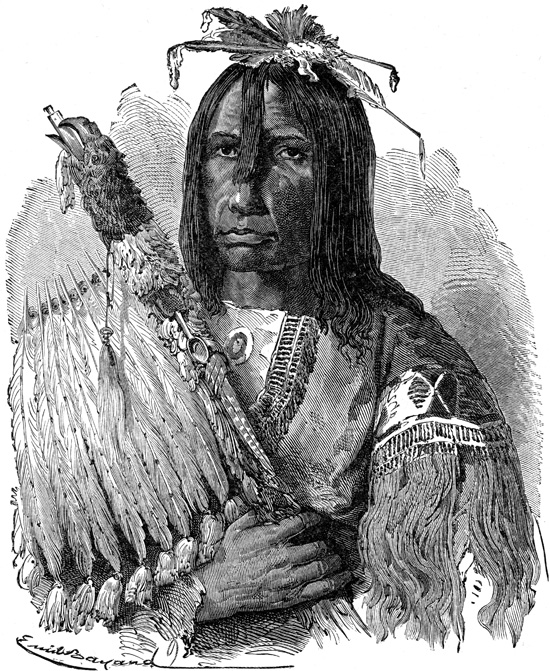 Indian Chiefs :: Blackfeet Chief | |
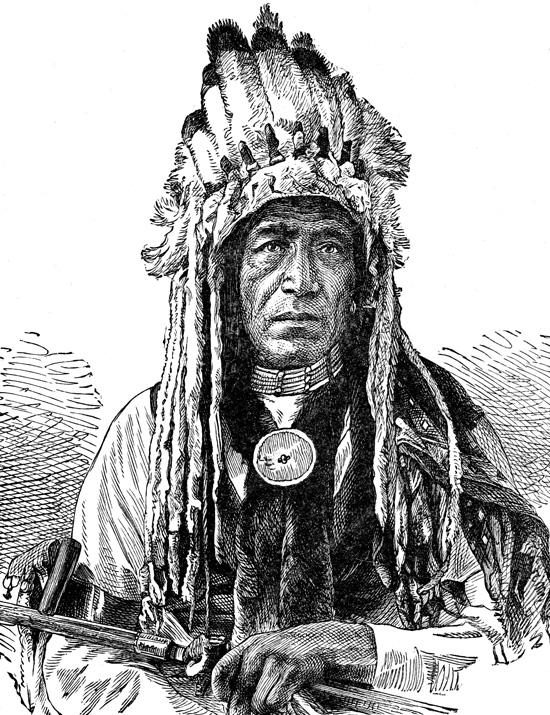 Indian Chiefs :: Crow Chief | |
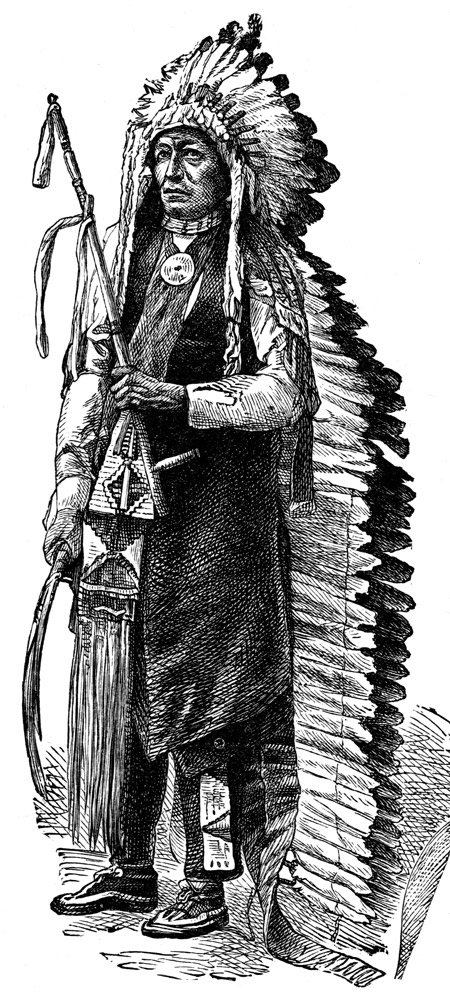 Indian Chiefs :: Dakota-Sioux Chief | |
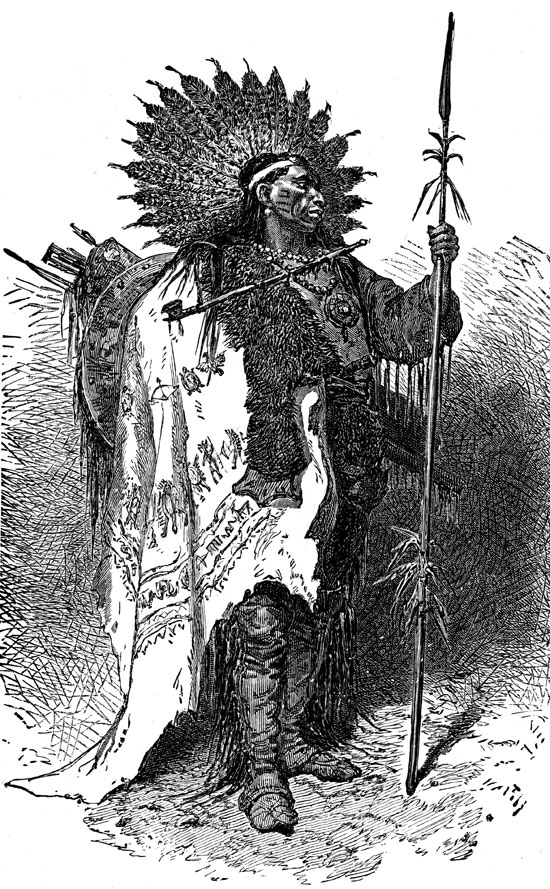 Indian Chiefs :: Crow Chief in War Costume |



No comments:
Post a Comment